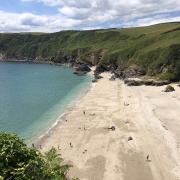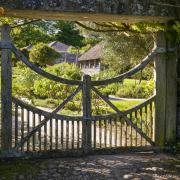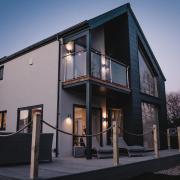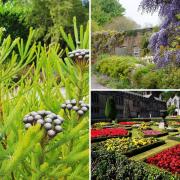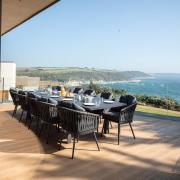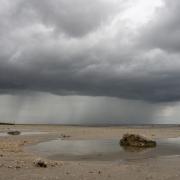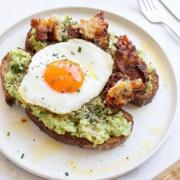At the far west of the county lies Penzance, a spirited town, proud of its seafaring heritage and with plenty of unique offerings for visitors.
Penzance is a rather good place to arrive at. By car you come to the end of the A30, cresting the hill to see Mount’s Bay, a sweep of water, a distant horizon, and that awe-inspiring view of St Michael’s Mount. By train, it’s the end of the line, and any railway terminus is always accompanied by a sense of homecoming, or adventure. Penzance promises adventure and untamed excitement, probably due to its remote, far westerly location and long association with the sea.
The History
By the 1800s, a small port had grown to become a flourishing harbour with goods being both imported and exported alongside a strong fishing fleet. Tales of smuggling and pirates have grown alongside the legitimate seafaring trade and still add a layer of excitement to exploring the streets and in particular the pubs of the town, which have many stories to tell.
People have always journeyed to Penzance, it’s been a stannary town and a market town. The large Market House building at the top of Market Jew Street, which first opened in 1838, is a reminder of the generations of traders who came here from the countryside to sell their goods.
The Georgians and Victorians came too, for more leisurely reasons. Penzance has the only Victorian promenade in Cornwall and, despite being battered by storms over the years, it’s remained a hugely popular part of the town, and has been restored and revitalised in recent years.
There’s nothing twee about the harbour, this is a working port, but it’s such a good place to explore, perhaps stopping off at a café or bar for an alfresco drink. It’s always busy and lively, but as a contrast Penzance also has quiet green spaces, including its impressive sub-tropical Morrab Gardens and also Penlee Park, in the corner of which you’ll find Penlee House Gallery and Museum.
Penzance is also an ideal base from which to explore this part of Cornwall. Just on the outskirts are several outstanding gardens to visit and just ‘along the coast’ are Marazion and St Michael’s Mount and, in the westerly direction, Newlyn, which offers some great spots for food and drink and plenty more unique adventuring opportunities.

Where to Stay
Hotel Penzance is an Edwardian townhouse, a former merchant’s house commanding sea views across the harbour to St Michael's Mount. It has an excellent restaurant too, with an ethos of farm to fork dining. A new sister hotel is Beachfield Hotel down on the promenade. Artist Residence is a tucked away delight, set in a Georgian coach house, it has quirky rooms, a neighbourhood-style restaurant and a little hideaway terrace garden. The Summer House is an elegant regency house with five boutique bedrooms and a pretty courtyard garden. It offers superb breakfasts, evening platters and a 24-hour pantry and is just a short distance from Penlee House. For more historical quirkiness there is The Egyptian House, an extraordinarily ornate three storey building in Chapel Street which is available to stay in. Dating from about 1835 and built as ‘a museum and geological repository’, it was bought by the Landmark Trust in 1968, which carefully restored it.
Food and Drink
A visit to Lavenders Deli is a must, especially if a Cornish pasty is on your hitlist. This family-run food emporium has been going since 1978 and it’s a local institution. Stop off at Cork & Fork for lunch, perhaps a crab sandwich or superfood salad, or a shellfish plank for a leisurely evening, with great wines to match. Experience meticulously prepared dishes with Asian and Mediterranean influences from Michelin-recommended The Shore, where chef patron Bruce Rennie works entirely alone to create a unique dining experience. Harris’s is another Michelin-recommended restaurant, and a local favourite. It’s been run by the same family for 30 years and consistently produces excellent food with local and seasonal ingredients. Set off Chapel Street, in a tiny fairylight-filled courtyard is a hidden gem. Bakehouse restaurant is another family-run culinary success story, with a small team serving excellent and well-sourced food.

Pirates and Pints
The Admiral Benbow has become famed throughout the world – both Gregory Peck and the Rolling Stones are among its visitors. It is an extraordinary pub, even for Penzance standards. It’s old, and still feels old, the building dating back to 1695 was once the haunt of smugglers – with tunnels to prove it. There are salvaged items from wrecks, including ships’ figureheads, everywhere you look. No surprise that it also inspired Robert Louis Stevenson’s Treasure Island.
The People's Pool
Jubilee Pool is rightly described as a ‘jewel in the crown’ of Penzance. It is the largest art deco seawater lido in the UK and the first to be heated by its own geothermal well. It opened in 1935 to celebrate the Silver Jubilee of King George V and is now run as a charitable community benefit society, so by the community and for the community.
Getting Creative
Artists love Penzance, and it has a strong creative feel. Its galleries range from those with historic work, such as the Newlyn School at Penlee House, to contemporary art at The Exchange and a host of privately run galleries in between. It also mixes creativity with tradition in its festivals. This month sees Golowan hitting the streets and watch out for ‘the friendliest literary festival in the UK’ from 6 to 9 July.






